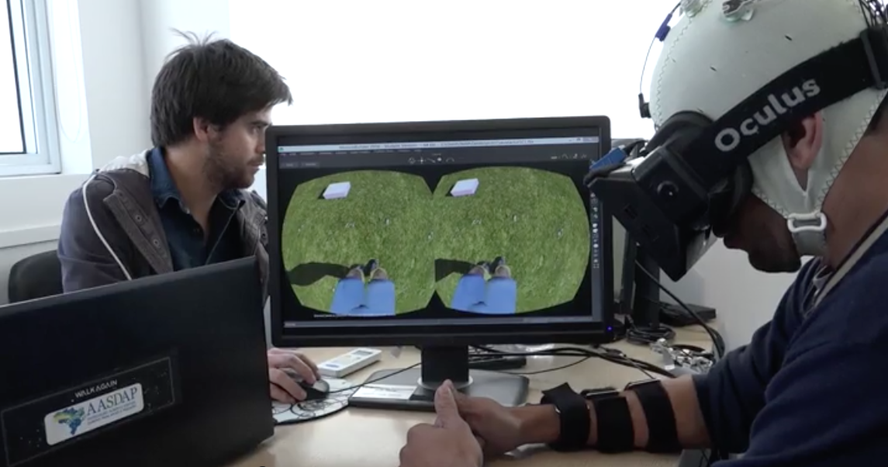Improve the neurological functions of paraplegic with brain-machine interfaces

Paraplegic patients with spinal cord involvement have managed to improve their sensitivity and neuromuscular functions by training for a long time with brain-machine interfaces. The research was conducted with eight patients, all of them with significant improvements. The results have been published in the journal Scientific Report.
The eight patients who participated in the research were between 3 and 13 years old with complete paraplegia due to serious spinal cord damage. They trained for a year with brain-machine interfaces (BMI, brain-machin interface). They used non-invasive interfaces: the electrodes placed on a cap collected signals from the brain. And they did three exercises. In the first, they had to move the three-dimensional avatar of a person in a virtual reality environment, imagining the movements of his body; and every time the feet of the abatarra touched the earth they received tactile feedback on the arm. The second exercise consisted of a tape with a robotic orthosis. And finally, the third exercise consisted of walking with an exoskeleton controlled with the brain. In both exercises patients received tactile feedback.
Neurological studies conducted over 12 months showed that all patients experienced significant improvements in both sensitivity and voluntary muscle control. Below the affected area in the spinal cord they went from being practically harmless to being again, arriving some to move several joints of the legs. In addition, a notable improvement in bowel and bladder control was observed. Thus, they have concluded that with this type of long workouts it is possible to partially recover some neurological functions. Precisely after this year of training, the diagnosis of half of the patients went from a total to a partial paraplegia.
The researcher at Duke University (USA), Miguel Nicolelis, has recognized that when the brain machine began to be studied with interfaces, it was expected that, at most, patients could move by controlling exoskeletons or artificial bodies with the brain. “We had never expected the prolonged use of these devices to be a neurological improvement,” Nicolelis explains in a press release issued by Duke University.
The researchers hypothesis is that combining brain-machine interfaces with virtual reality, physical leg movement and tactile feedback can influence the plasticity of the spinal cord and cortex. “Patients moving their legs and walking upright excite muscle, tendon, and joint proprioceptors that send signals back to the spinal cord,” explains Nicolelis.




